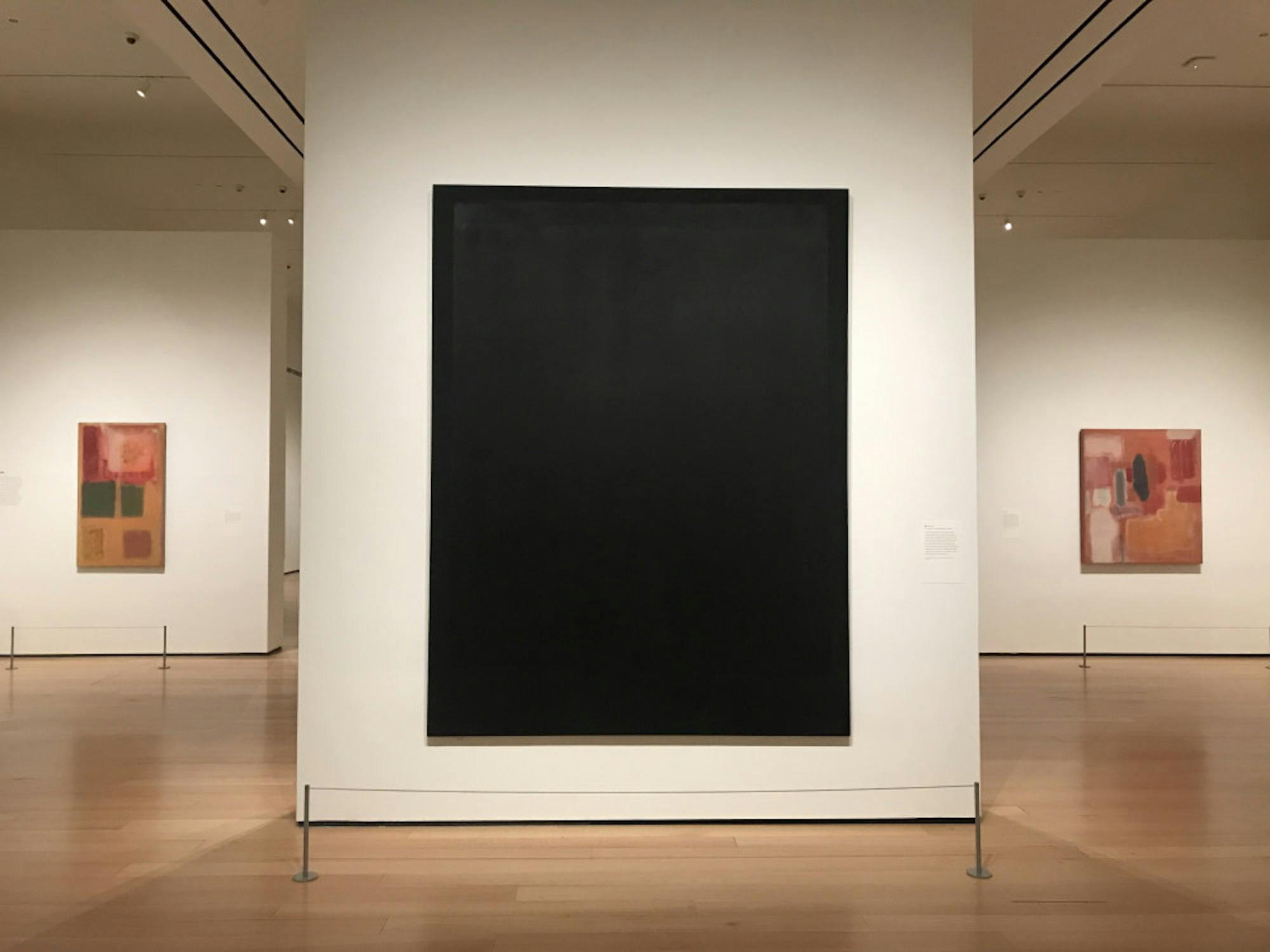The Museum of Fine Arts (MFA)'s “Mark Rothko: Reflection” is the institution’s first show dedicated solely to the abstract expressionist. Featuring 11 of Rothko’s works, the exhibition's curatorial display and the small number of works provide an intimate setting to engage with. A highlight of the show is the work “Thru the Window” (1938), which is on display in the United States for the first time. A departure from his large-scale abstractions, the small self-portrait offers viewers a chance to see how Rothko viewed himself. Still, though “Thru the Window” offers us with a figural depiction of Rothko, one could argue that each painting, no matter the degree to which it is abstracted, gives insight into Rothko’s process and emotions.
As the artist himself stated, “I'm interested only in expressing basic human emotions — tragedy, ecstasy, doom and so on — and the fact that a lot of people break down and cry when confronted with my pictures show that I communicate those basic human emotions … the people who weep before my pictures are having the same religious experience I had when I painted them.”
The religious experience Rothko describes is immediately apparent when entering the space, as visitors first see and feel the works’ immense scale. The exhibition is divided into stages of Rothko’s career. The first section compares Rothko’s “Thru the Window” with Rembrandt’s “Artist in his Studio” (1628) and utilizes the juxtaposition of the works to highlight classic Western European art’s influence on the modernist painter. While the MFA’s description of the show emphasizes positioning Rothko in the broader context of Western art, their justification of his positioning is weak. This is helpful to visitors who are not well versed in the abstract expressionist movement, but placing a single work by Rembrandt to draw this conclusion is overreaching. Instead of attempting to link Rothko to the past, the MFA may have been better off marketing the show as an abbreviated retrospective of the artist, showcasing his evolution into abstraction or linking him to contemporaries. However, the impressive quality of the works themselves still make it highly enjoyable.
The subsequent portion of the show is called “Multiforms,” after a series of paintings from 1947–1949 when the artist was still figuring out his process. In these works, Rothko has multiple blocks of color and different washes, and we see early inklings of Rothko's iconic color stripes. From these “Multiform” works, the viewer can see Rothko slowly figure out abstraction and come into the essence of his painting technique. After “Multiforms," the exhibition transitions into “Rothko’s ‘Classics,’” his famed large canvases with stripes of color, which have claimed upward of $46 million. When standing in front of a Rothko, the viewer is awestruck by both the size and attention to detail: how the borders of the seemingly demarcated blocks blur into each other, how colors are layered on top of one another while other colors peak through, breathing life into the canvas. One of Rothko’s stripe paintings “Mulberry and Brown” (1958) is particularly interesting, as it is one of Rothko's only uses of tempera. This gives a tacky feature to the canvas, and the physical pulling of the egg whites and wax on the canvas create a different sensation of tactility than his other works.
The exhibition concludes with a series from the last period of Rothko’s career, his black paintings. Instead of multiple colors, the artist uses different variations of black that are almost indistinguishable on the canvas. Upon closer inspection, viewers can notice the different tonalities and qualities Rothko gives to each shade of black. The black series is the peak of Rothko’s abstraction; he strays further from color relations and focuses mainly on forms and the emotive reactions of the works. The paintings take on a macabre tone not only because of their dearth of color, but also because of the artist’s tragic passing in 1970, when he killed himself. The black series is extremely potent in its command of depth and space, and the arresting qualities it projects onto the viewer. The series symbolizes an artist at the peak of his craft, pushing at the very boundaries of abstraction.
Mark Rothko was a deeply complicated artist with many different influences who engaged with several artistic movements and had a highly volatile personal life. Although the curation of “Reflections: Mark Rothko” was ultimately lacking, it is not a sign of the curator’s ineptitude; it is due to the small scale of the show and the complexity of contextualizing Rothko’s works.
Rothko once said, “A painting is not a picture, but an experience.” This show and Rothko’s work certainly back him up.
More than just stripes: On 'Mark Rothko: Reflection' at the MFA

Mark Rothko was an American painter of Russian Jewish descent who is generally identified as an abstract expressionist.
Summary
Although the curation of “Reflections: Mark Rothko” was ultimately lacking, it is not a sign of the curator’s ineptitude; this is due to the small scale of the show and the complexity of contextualizing Rothko’s works.
4.5 Stars





